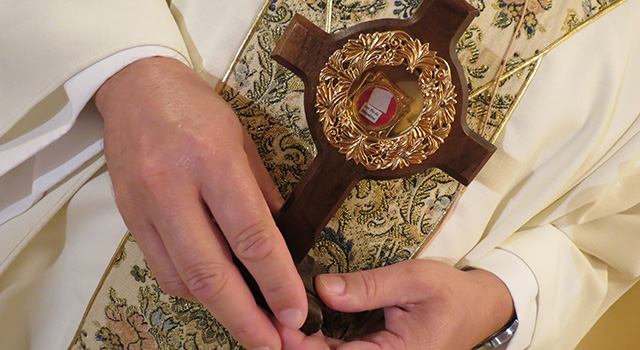By Lizsandra Trastoy - Florida Catholic Newspaper
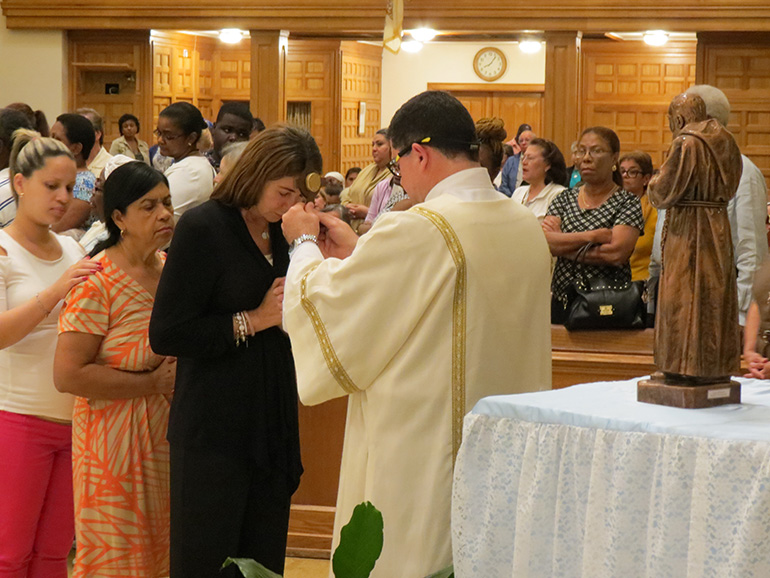
Photographer: LIZSANDRA TRASTOY | FC
Deacon Raul Flores blesses parishioners with the relic of Padre Pio following the Mass at St. Mary Cathedral.
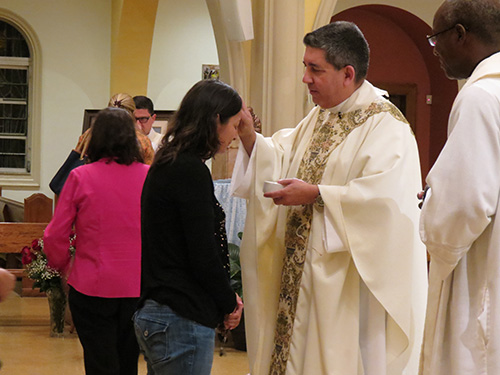
Photographer: LIZSANDRA TRASTOY | FC
Father Luis Garcia anoints Sonia Ballesteros, a parishioner at St. Joseph Church, Miami Beach.
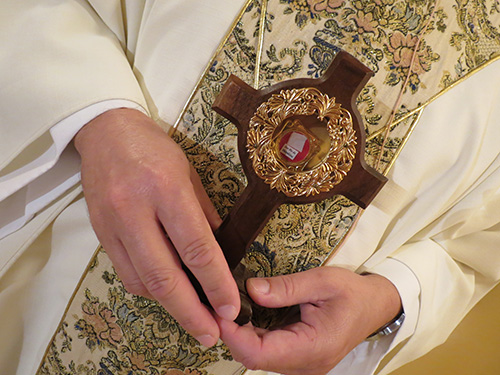
Photographer: LIZSANDRA TRASTOY | FC
Father Luis Garcia, who has a special devotion for Padre Pio, holds the relic: a piece of cloth used to wipe the blood from Padre Pio’s wounds or stigmata.
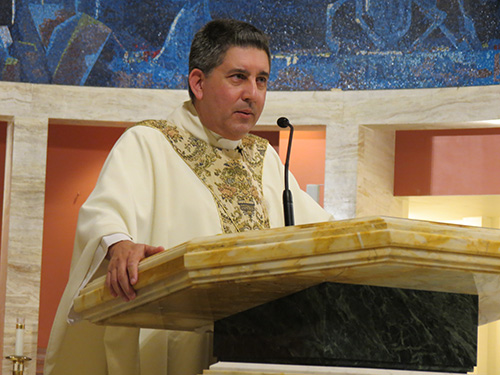
Photographer: LIZSANDRA TRASTOY | FC
In his homily, Father Luis Garcia notes that prayers to Padre Pio have resulted in many healings and miracles. He gave the example of one woman who was infertile and after praying to Padre Pio now has a son.
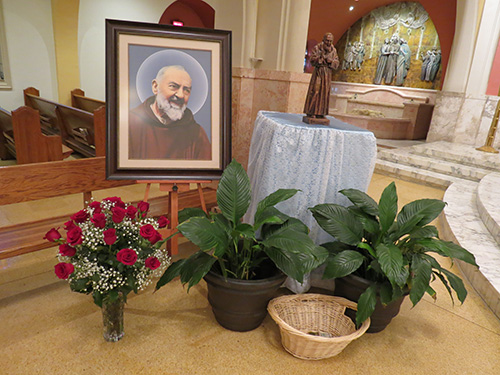
Photographer: LIZSANDRA TRASTOY | FC
Father Luis Garcia celebrated Mass for the feast of Padre Pio on Sept. 23 in St. Mary Cathedral. Parishioners were anointed with oil blessed in the convent of Padre Pio, as well as blessed with his relic following the Mass.
MIAMI | On Sept. 23, feast day of St. Pio de Pietrelcina, better known as Padre Pio, Father Luis Garcia celebrated a Mass at St. Mary Cathedral which included anointing and blessing of the sick and veneration of a relic of Padre Pio.
Father Garcia is in residence at the cathedral and works as a case facilitator at the archdiocesan Tribunal.
He is personally very devoted to Padre Pio, and noted in his homily that he has traveled three times to Pietrelcina and the Church of St. Giovanni Rotondo where Padre Pio served.
He also spoke of various parishioners he had encountered who have prayed to Padre Pio and received healing in return. He gave the example of one woman who was infertile. After Father Garcia introduced her to the life of Padre Pio, she began praying to him - and now has a son.
Father Garcia said he hopes to make this an annual event at the cathedral.
Following is a biography of Padre Pio published by AmericanCatholic.org:
"Born Francesco Forgione, Padre Pio grew up in a family of farmers in southern Italy. Twice (1898-1903 and 1910-17) his father worked in Jamaica, New York, to provide the family income.
"At the age of 15, Francesco joined the Capuchins and took the name of Pio. He was ordained in 1910 and was drafted during World War I. After he was discovered to have tuberculosis, he was discharged. In 1917 he was assigned to the friary in San Giovanni Rotondo, 75 miles from the city of Bari on the Adriatic.
"On September 20, 1918, as he was making his thanksgiving after Mass, Padre Pio had a vision of Jesus. When the vision ended, he had the stigmata in his hands, feet and side.
"Life became more complicated after that. Medical doctors, Church authorities and curiosity seekers came to see Padre Pio. In 1924 and again in 1931, the authenticity of the stigmata was questioned; Padre Pio was not permitted to celebrate Mass publicly or to hear confessions. He did not complain of these decisions, which were soon reversed. However, he wrote no letters after 1924. His only other writing, a pamphlet on the agony of Jesus, was done before 1924.
"Padre Pio rarely left the friary after he received the stigmata, but busloads of people soon began coming to see him. Each morning after a 5 a.m. Mass in a crowded church, he heard confessions until noon. He took a mid-morning break to bless the sick and all who came to see him. Every afternoon he also heard confessions. In time his confessional ministry would take 10 hours a day; penitents had to take a number so that the situation could be handled. Many of them have said that Padre Pio knew details of their lives that they had never mentioned.
"Padre Pio saw Jesus in all the sick and suffering. At his urging, a fine hospital was built on nearby Mount Gargano. The idea arose in 1940; a committee began to collect money. Ground was broken in 1946. Building the hospital was a technical wonder because of the difficulty of getting water there and of hauling up the building supplies. This "House for the Alleviation of Suffering" has 350 beds.
"A number of people have reported cures they believe were received through the intercession of Padre Pio. Those who assisted at his Masses came away edified; several curiosity seekers were deeply moved. Like St. Francis, Padre Pio sometimes had his habit torn or cut by souvenir hunters.
"One of Padre Pio’s sufferings was that unscrupulous people several times circulated prophecies that they claimed originated from him. He never made prophecies about world events and never gave an opinion on matters that he felt belonged to Church authorities to decide. He died on September 23, 1968, was beatified in 1999 and canonized by John Paul II on June 16, 2002."
